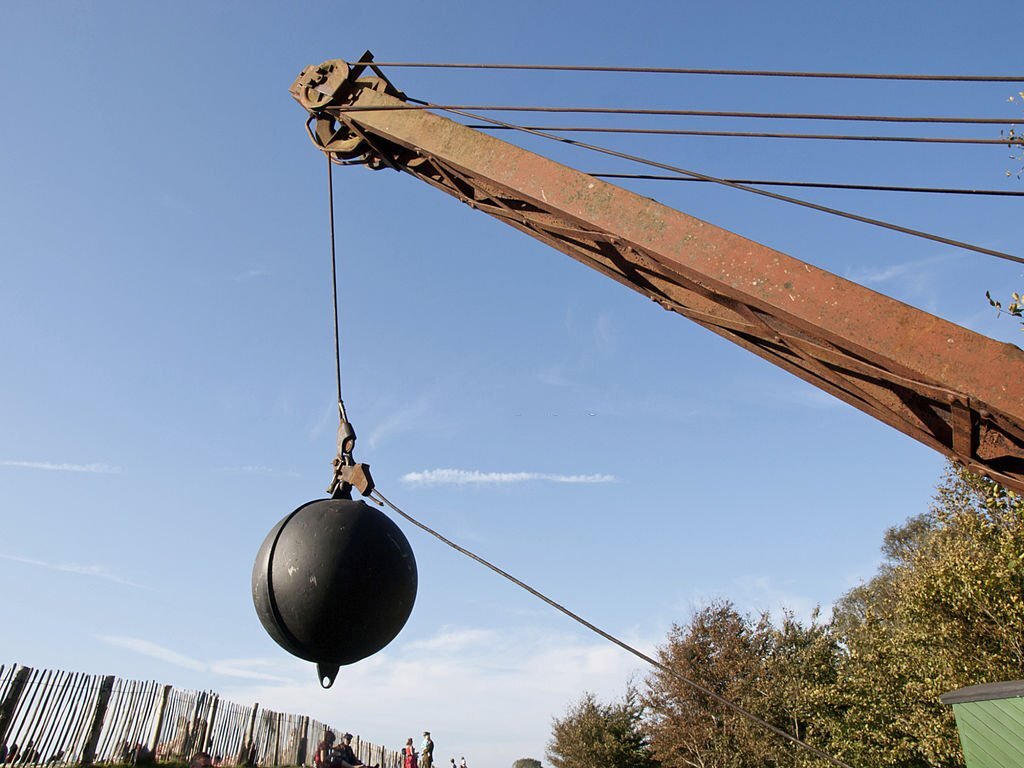
Introduction
Wrecking balls have a historic and iconic place in the world of demolition, evoking images of towering structures being brought down with a mighty swing. These colossal spheres, suspended from cranes, are a powerful tool in the hands of experienced demolition crews. In this comprehensive article, we will explore the crucial role of wrecking balls in the demolition process. From the mechanics of operation to their applications, advantages, and limitations, we will delve into how these indomitable machines bring raw power and efficiency to the art of tearing down large, solid structures.
1. The Mechanics of a Wrecking Ball
A wrecking ball is a massive, heavy sphere typically made of iron or steel. It is connected to a crane through a thick chain or cable. To demolish a structure, the crane operator swings the wrecking ball into the targeted area with tremendous force. The impact of the ball generates a shockwave that fractures the materials, causing the structure to collapse under its own weight.
2. Applications of Wrecking Balls
Wrecking balls are particularly suitable for demolishing large, solid structures that require brute force to break apart. They are commonly used in the demolition of industrial buildings, bridges, chimneys, and reinforced concrete structures. Wrecking balls are especially effective when demolishing structures with sturdy materials that are difficult to break using conventional tools.
3. Advantages of Using Wrecking Balls
One of the primary advantages of using wrecking balls is the sheer force they deliver. Their raw power allows for the rapid dismantling of structures, making them a time-efficient choice for demolishing large buildings. Moreover, wrecking balls do not rely on complex hydraulic systems or require extensive setup, making them relatively easy to use.
4. Limitations of Wrecking Balls
Despite their impressive power, wrecking balls do have limitations. Their lack of precision can be a disadvantage when demolishing structures in close proximity to other buildings or when preserving certain sections of a structure. The swing of the wrecking ball can cause collateral damage to surrounding areas, necessitating careful planning and coordination during the demolition process.
5. Safety Considerations
Operating a wrecking ball requires a skilled crane operator with experience in demolition work. Safety is of utmost importance during the operation, as the immense weight and impact force of the wrecking ball can pose risks to both workers and the public. Strict safety protocols, secure barricades, and proper planning are essential to ensure a safe demolition process.
6. Alternatives to Wrecking Balls
While wrecking balls are effective in certain demolition scenarios, there are alternative methods that offer more precision and control. For instance, hydraulic excavators with various attachments, such as shears and hammers, provide greater flexibility and accuracy when dealing with complex demolition projects. High-reach excavators are also an option for demolishing tall structures with minimal impact on surrounding areas.
7. Environmental Impact
The use of wrecking balls can generate significant dust and noise pollution, which may affect the surrounding environment and nearby residents. Implementing dust suppression measures and scheduling demolition activities during less disruptive hours can help mitigate the environmental impact of using wrecking balls.
8. Advancements in Demolition Techniques
As technology advances, demolition methods are continually evolving. Controlled explosives, implosion techniques, and robotic demolition tools offer alternative approaches to bringing down structures safely and efficiently. However, these methods require highly skilled and experienced demolition experts to ensure precise execution and safety.
Conclusion
Wrecking balls have played a pivotal role in the history of demolition, symbolizing the raw power required to bring down towering structures. While they continue to be a viable option for demolishing large, solid buildings, their limitations must be carefully considered in modern demolition projects. By understanding the mechanics, applications, advantages, and limitations of wrecking balls, construction professionals can make informed decisions on when and how to utilize these indomitable machines. As technology advances, the demolition industry will continue to explore new methods and tools to enhance precision, safety, and environmental responsibility in the pursuit of efficient and sustainable demolition processes.

